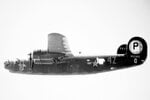- Thread starter
- #341
SaparotRob
Unter Gemeine Geschwader Murmeltier XIII
I picked the B-17 but I was wondering if any of the larger aircraft of the Second World War were surprisingly pleasant to fly and perhaps more maneuverable than one might think.


